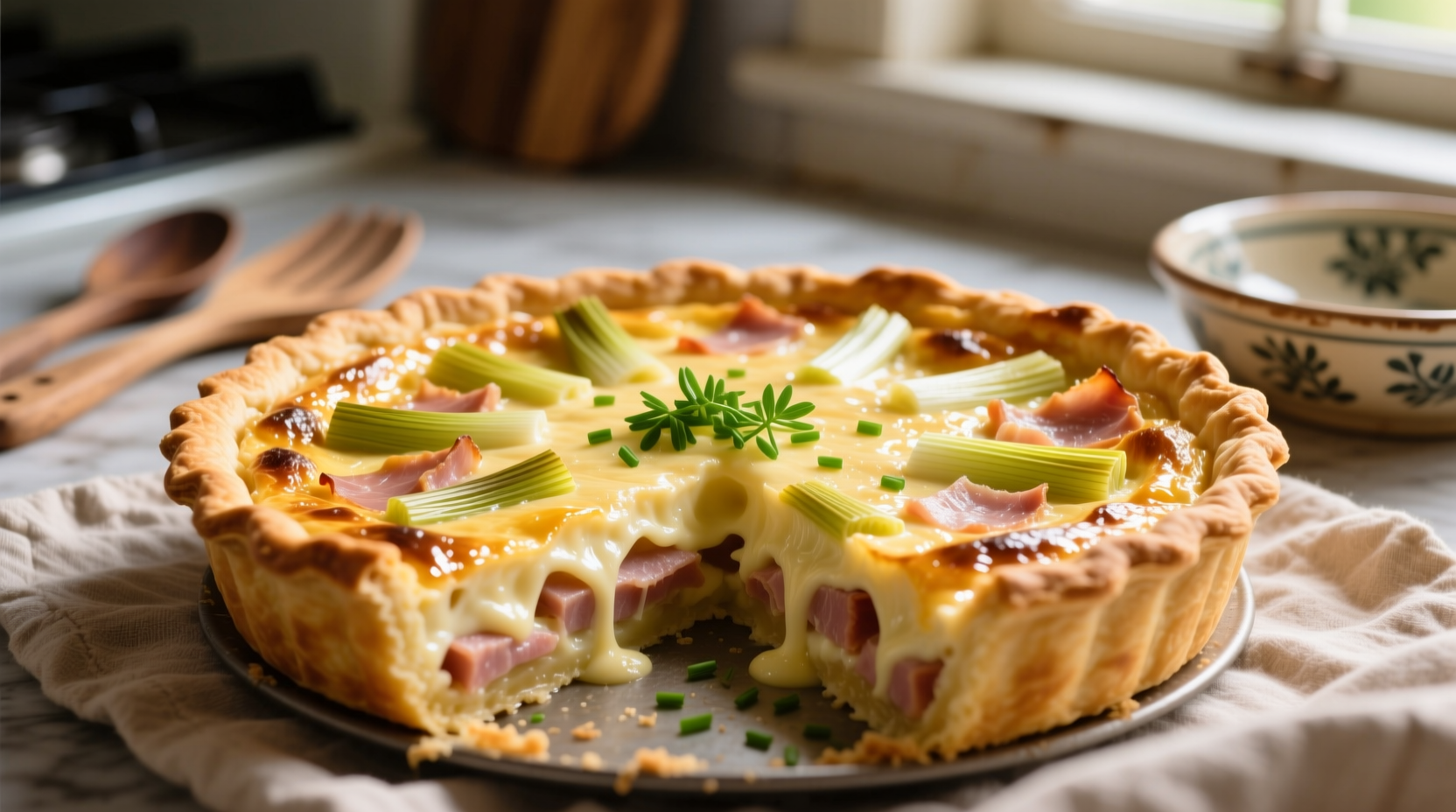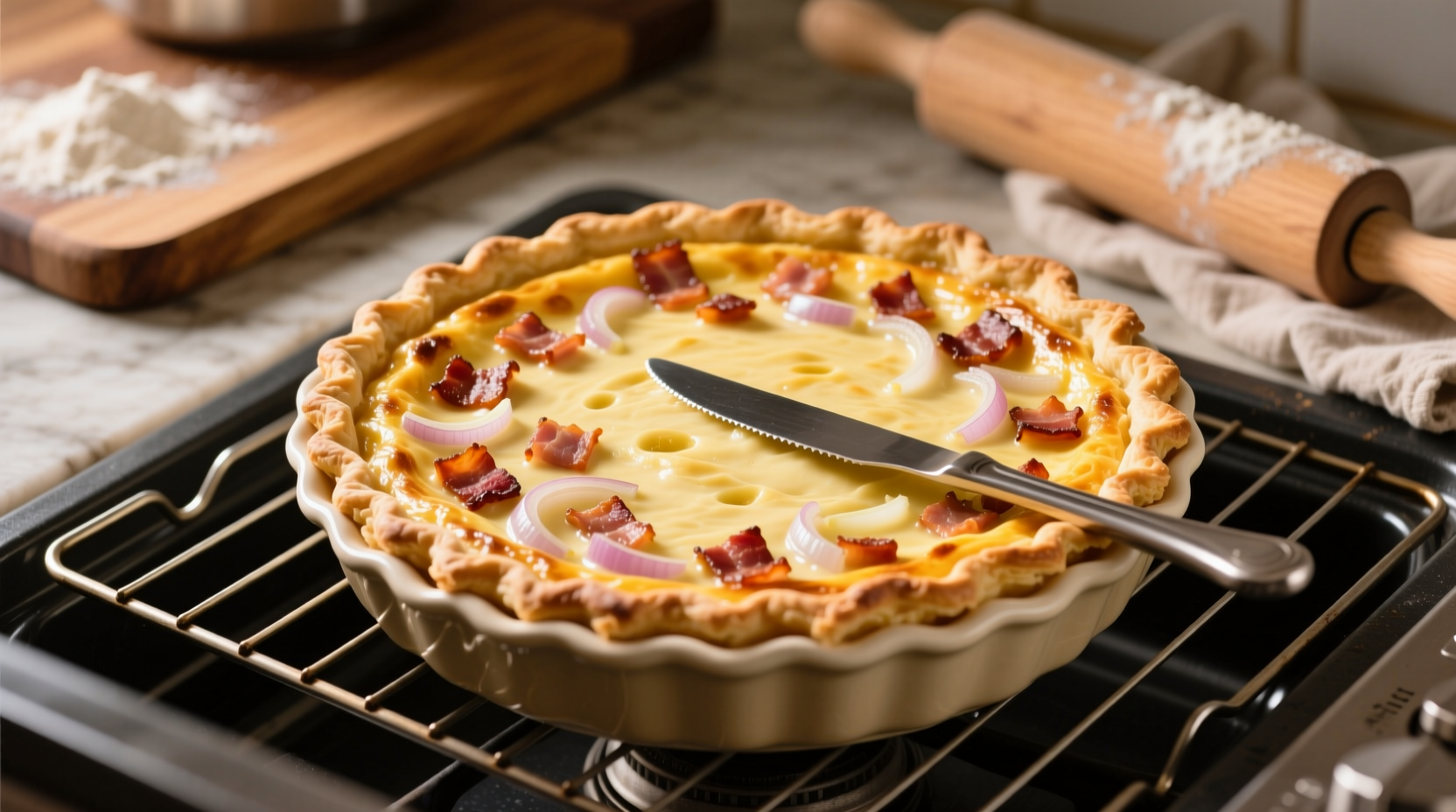Ever pulled a quiche from the oven only to find a runny center or overcooked edges? Getting the timing right at 350°F transforms this classic French dish from disappointing to divine. As a home cook, you need precise guidance that accounts for real-world variables like pan material, filling density, and oven accuracy—factors that can add or subtract 10 crucial minutes from your baking time.
Why 350°F Is the Sweet Spot for Quiche
Cooking quiche at 350°F creates the ideal environment for even heat distribution. Higher temperatures risk curdling the delicate egg custard, while lower settings prolong cooking and may leave the center unset. This moderate heat allows the filling to gently coagulate without bubbling over or developing a rubbery texture—a common pitfall for novice bakers.
Key Factors That Adjust Your Baking Time
Your actual cooking duration depends on three critical variables:
| Factor | Impact on Time | Adjustment |
|---|---|---|
| Quiche Size | 9-inch standard vs mini portions | Reduce mini quiches by 10-15 minutes |
| Filling Density | Vegetable-heavy vs meat fillings | Add 5-8 minutes for dense ingredients |
| Pan Material | Dark metal vs glass vs ceramic | Reduce glass/ceramic time by 5 minutes |
Your Step-by-Step Baking Guide
Follow this professional-tested sequence for flawless results:
- Preheat thoroughly - Allow 20 minutes for oven to stabilize at 350°F
- Prepare quiche - Fill pre-baked crust to 1/2 inch below rim
- Position correctly - Place on center rack with no pans above
- Start timer at 35 minutes - Begin checking for doneness
- Test internal temperature - Insert thermometer into center
How to Confirm Perfect Doneness
Don't rely solely on the clock—use these visual and physical indicators:
- The edges should be set with a light golden crust
- The center maintains a slight jiggle (like firm gelatin)
- Internal temperature reads 160°F (71°C) on instant-read thermometer
- A knife inserted near center comes out clean
According to USDA Food Safety guidelines, egg-based dishes must reach 160°F to eliminate salmonella risk while maintaining optimal texture. Undercooked quiche (<150°F) will remain runny, while overcooked quiche (>170°F) develops unsightly bubbles and a rubbery consistency.

Troubleshooting Common Issues
Problem: Soggy bottom crust
Solution: Blind bake crust for 10 minutes before adding filling. Place quiche on lowest oven rack for first 15 minutes.
Problem: Cracked surface
Solution: Reduce oven temperature by 25°F and cover edges with foil after 25 minutes. Avoid overmixing the custard.
Problem: Runny center
Solution: Return to oven in 5-minute increments. Remember carryover cooking continues for 10 minutes after removal.
Altitude and Oven Type Considerations
High-altitude cooking (above 3,000 feet) requires adjustments due to lower atmospheric pressure. Increase baking time by 5-8 minutes while reducing oven temperature to 325°F. Convection ovens circulate hot air more efficiently—reduce standard time by 25% or lower temperature by 25°F.
Professional bakers at America's Test Kitchen confirm these adjustments prevent the common high-altitude issue of premature crust browning before the center sets. Their testing shows that without these modifications, quiches at elevation frequently develop a custard separation problem known as "weeping."











 浙公网安备
33010002000092号
浙公网安备
33010002000092号 浙B2-20120091-4
浙B2-20120091-4